I promised myself that this year I would focus on movies that spoke directly to what I was feeling this year. It turns out that the thematic throughline of this year for me was: “Well, who even am I?” So many of my favorite movies of 2024 were about questioning the nature of our true selves. This kind of introspection bled into my personal life as I started earnestly parenting a toddler for the first time.
I know that there’s a fair chance that someday Miles will speak to a therapist about his father. Now, it might mostly be good things, but I know that the ways we view our parents changes over time. As we come into adulthood, we begin to have new insights into who our parents must have been when raising us. I am lucky enough to be blessed with wonderful, reflective parents, and I hope that I will be the same for Miles. Still, I know that how I see myself may be different from how he, and the world, sees me.
When looking at the biggest box offices of the year, the film industry feels like a return to a pre-pandemic era. The top five movies of the year were all sequels (Inside Out 2, Deadpool & Wolverine, Moana 2, Despicable Me 4 and Dune: Part Two). Last year’s Barbenheimer might have gotten audiences back to theaters for new stories, but a return to theaters also meant a return to normalcy. Only one movie of the top fifteen wasn’t a sequel, but funnily enough that movie is titled Wicked: Part I.
Nevertheless, when I think back on the year 2024, I don’t think I’ll remember many of these movies. I’ll largely remember staying up late at night, long after Miles went to bed, to watch movies like I Saw the TV Glow, A Different Man and Nickel Boys. There were so many movies that made me question the type of person I am. And as I raise a child who is now actively shaping his own personality, in part by watching me, I think about that question more than ever: Who am I?
As a person who oscillates between being fairly self-assured and having crippling imposter syndrome, perhaps the answer to who I am is that there is no answer. We are all constantly changing, slowly becoming our new selves every day, and that’s what is great about these lovely movies listed below. They help me fill in those gaps little by little by asking me these open-ended questions. By the end of each year, I am a bit more confident in who I am. And, maybe most importantly, in who I want my son to see me as. I hope he likes what he sees, and who knows, maybe someday he’ll even like some of these movies.
***
These are my Top Movies of 2024. As always, this isn’t an objective ranking of quality. Art is largely subjective and personal. These are just the movies that affected me most in 2024.
I Saw the TV Glow
“Used to be one of the wretched ones and I liked you for that”
I Saw the TV Glow is a movie about a teenager coming to grips with the fact that they might be trans. There’s no way of hiding it. It’s the Rosetta Stone for understanding the sophomore film from director Jane Schoenberg (they/them). Now, I’m not trans, and, to be quite honest, I haven’t done enough work on my own sexuality to call myself anything close to queer. Yet even still, this was the most affected I’ve been by a movie all year. It’s deeply personal to me in ways beyond its handling of transness. It’s so personal that I’m not even upset if others choose not to watch it. When you were a kid, did you ever discover a band or a song that was so meaningful to you that you didn’t want to share it with anyone? Or if you heard someone talking about it, positively or negatively, you felt pained? This thing spoke directly to you, as if it was made just for you. That’s what I Saw the TV Glow feels like. Not just for me, but for people who feel like maybe they don’t quite belong. Outcasts, misfits, and—most crucially—trans people.
“Now you're all gone, got your make-up on and you're not coming back Can't you come back?”
The movie opens with Owen, a young loner, whose somberness practically radiates off the screen. On the eve of Bill Clinton’s re-election, he meets Maddy in a school cafeteria. She is reading an episode guide for a fictional TV show called The Pink Opaque, a Buffy the Vampire Slayer-inspired series about two young girls who must fight the evil Mr. Melancholy. Upon learning more about the show, Owen becomes obsessed and uses it to forge a connection with his new friend. They stay up late on Friday nights to watch each episode and pass notes about the show to each other during school.
The remainder of the movie presents dueling realities of the show and of our characters, often intertwining in powerful and confusing ways, until the movie reveals that reality and fiction are one. The second half of the movie is full of surrealist imagery, performances and monologues. To call it David Lynch-esque wouldn’t be a reach. If that kind of movie isn’t for you, I get it. But by the end, I was a puddle of tears in the theater, breathing quickly and internally cheering and screaming for our protagonists.
“Bleaching your teeth, smiling flash, talking trash, under your breath”
If it isn’t obvious, I was obsessed with movies and TV shows as a kid. I owned many episode guides just like Owen. They were little booklets that had episode summaries and pop culture lore back before the internet. I would watch shows just like the Pink Opaque. These were lo-fi 90s media that felt equal parts juvenile, off-kilter, scary and potentially queer-coded. Schoenberg clearly had a similar upbringing. Their first movie “We’re All Going to the World’s Fair” was my 6th favorite movie of 2022, and I felt that Schoenberg was one of the few filmmakers who understood my generation, including our confusing connection to the internet and pop culture.
When I was young, I never felt manly enough. I imagine many people of my generation may have struggled with how they performed their gender. Was I tough enough? Was I a wimp if I didn't like playing tackle football? Was I gay if I liked romantic comedies? What would my dad think if he walked in while I was watching Buffy the Vampire Slayer or listening to punk girl bands like The Donnas?
What TV Glow understands so well is how the media we consume can feel like a refuge- a reprieve from a world we don’t feel like we fit into. A secret love language. In this refuge, we forge bonds with people who feel the same way. You see this at every type of fan convention: groups of people gathering to celebrate the media that they’ve attached their identity to because they felt like it saved them. But TV Glow’s ending isn’t a purely happy one. It’s about how that same media can be a prison. We can hold onto that identity so firmly that we never grow. We become middle-aged adults in a state of arrested development, frozen in time, unable to realize that art was always meant to be a stepping stone to who we are, not a final destination. We are not finished products.
“Park that car, drop that phone, sleep on the floor, dream about me”
I Saw the TV Glow is about Owen trying to reconcile with the reality that he might not be who he thinks he is. That he might have to bury who he was and become who he should be. But he’s terrified. Afraid to come face to face with the evil Mr. Melancholy. The film offers him, and us, a quiet reassurance: “There is still time.” Still time to become the true people we were always meant to be. I Saw the TV Glow is a true piece of art from a new, emerging artist.
It’s a gasp for air. A waking nightmare. A friend’s outreached hand. It’s stunning work.
“Used to be one of the rotten ones and I liked you for that
Now you're all gone, got your make-up on and you're not coming back”
- “Anthem for a Seventeen Year-Old Girl”, Broken Social Scene
Challengers
The trailer and screenshots gave the impression that this “throuple” tennis movie would be the sexiest movie of the year. What makes Challengers such a blast is that all of that energy was placed into the tennis scenes. Director Luca Guadagnino uses tennis as a metaphor for sex, desire and pursuit. He uses our competitive natures as analogues for our sexual ones, as well.
Patrick and Art are tennis doubles partners until they meet Tashi. Determined to win her affection, they compete on and off the court. All three characters are driven athletes, obsessed with winning everything they do. Watch closely and you’ll see that Guadagnino shoots all the dialogue scenes as competitions. The characters are constantly sparring with each other, often with words, occasionally for screen real estate. Power dynamics shift constantly, often within the same scene.
My favorite scene is between Patrick and Art, played brilliantly by Mike Faist and Josh O’Connor. The two start off talking about how each are doing in tennis, before quickly switching to discussing Tashi. Patrick tries to play mind games with Art about Tashi’s loyalty toward Art. Art realizes what is happening and pulls Patrick in tight. The two are shot in super close-up, the sexual tension rising. Patrick pushes Art’s face, but Art pulls him in closer. The two are practically kissing. Art counters, “See, this is what’s missing from your tennis”. To these characters, love and sex are all just competition. They’re all just means to get them to perform as best they can on the tennis court. Think I’m reading too much into it? Look at the symbolism of this churro below and tell me I’m wrong.
Challengers is a soap opera with tennis. By the final match, you know clearly what each character desires (spoiler: it’s more tennis). As the two characters are drenched in sweat and the pounding score drifts you into a trance-like state, you know that destiny brought these two here. Two men, alone on a court. One woman, sitting between them, watching with unwavering determination. Their faults and fears were only ever gonna be resolved after this one…last…serve.
Look Back
This movie is 58 minutes long, but it took me way longer than that to finish it. Not because it was bad, but because I kept rewinding scenes to rewatch them immediately after they happened. Ten minutes into the movie, there’s a gorgeous montage that I watched five times in a row. I’ve gone back and watched it three times while writing this blog. There’s times when I’m watching a great piece of hand-drawn animation and wonder if this is the pinnacle of human expression.
Look Back is an adaptation from acclaimed manga writer/artist Tatsuki Fujimoto. His recent claim to fame is a series titled Chainsaw Man, where a young bow is gifted magical powers that spawn chainsaws on both his hands and head to fight off evil demons. Now, I like anime, but even I know that sounds ridiculous. The idea that Fujimoto could make a story as tender as this took me by surprise.
The film may be short, but its story takes place over years. Fujino is a young girl who draws manga for her school paper (comics for the non-initiated). Her stories are fun and inventive, making her a local celebrity. She meets Kyomoto, a reclusive girl with a knack for splendid visuals. At first Fujino is intimated by Kyomoto’s artistic prowess and considers quitting, but when she meets Kyomoto in person for the first time, she’s surprised to find how much Kyomoto envies Fujino’s ability to tell stories. Fujino, reinvigorated by the compliment, runs home to start drawing again. Over the course of 60 seconds, we see Fujino walk, skip and then run in a spectacular piece of impressionistic art. Cue me rewinding this scene three more times.
The girls decide to team up and begin to create award-winning manga together. The plot follows their joys and tragedies. When it feels like their journey is at its lowest point, the story rewinds itself and tries again in a different way. Like an artist erasing and starting over, the movie offers to us that while our mistakes might feel like they demand correction, they are actually an important part of the process. That perhaps the whole reason we make art is to show it to the ones we love. And even when we fail the ones we love, we have to recognize that they don’t love us only for our successes. Us just being together through it all, that’s the success.
A Different Man
Movies about self-hatred had quite a year in 2024. I Saw the TV Glow dealt with rejecting a false self, whereas The Substance hammered home the struggle women feel about how the world sees their bodies. But perhaps no movie went as far this year as Aaron Schimberg’s A Different Man, a lean dark comedy about how we can never escape our true natures.
MCU veteran Sebastian Stan plays Edward, a man with a facial disfigurement who spends most of his days hyperaware of how the world around him perceives his appearance. He’s painfully shy and has difficulty with social interactions, feeling as though his mere existence is a burden to others. He hears of an experimental treatment that can change his appearance. The next week, he wakes up with a new face, renames himself Guy and quickly starts a thriving career in real estate.
One day, he hears of a play being put on by his former neighbor/crush where she wants to cast a man with a facial deformity that reminds her of Edward. Guy auditions while wearing a mask, able to land the role by tapping into his previous shyness. However, he’s quickly replaced by Oswald, another man with the facial deformity who upstages Guy at every turn. Guy, furious that he lost the role that was based on his former self, begins his downward spiral of obsession.
Oswald is played gregariously by Adam Pearson, an actor with the real life condition shown in the movie. Oswald is everything Guy is not. He’s outgoing, positive, and self-assured. Pearson’s performance is winning, wooing everyone in the movie and at home. He’s a perfect contrast to Sebastian Stan’s unstable Guy. Stan is putting career-best work here, and continues to have the best post-Marvel career of any superhero.
A Different Man has a distinct directorial voice. It has seducing visuals, striking musical choices and a clear sense of discomfort lurking in every frame. When the credits roll, you’ll perhaps think to yourself, “What was that?!”, and I’ll respond, “I know, right? Crazy!”
Red Rooms
Red Rooms is the scariest movie I saw this year. It’s a horror movie that never actually shows a drop of blood, but its subject matter is so dark that a trigger warning is highly recommended before starting.
Kelly-Anne is an enigmatic hacker who becomes obsessed with a high profile murder case. Ludovic Chevalier is a masked man accused of murdering young girls and broadcasting it live on the dark web for the highest bidder. Kelly-Anne attends the trial every day and spends her evenings hacking into both the defense and prosecution’s cases. One day at trial, she meets a young woman named Clementine who believes Chevalier is innocent. The two women form a sort of friendship, but only insofar as Kelly-anne allows it.
You see, Kelly-Anne is a mystery of a protagonist. We’re never quite sure what she’s interested in about the case. Does she hate the killer? Admire him? Want to see him behind bars or set free? Actress Juliette Gariepy plays Kelly-Anne with a chillingly unreadable expression. Red Rooms never gives us a clear answer on the nature of her obsession. Still, it appears that the obsession is the point, leading to the most traumatic, tense scene I saw in a movie this year. This scene left my mouth agape. How a movie can so easily capture evil without ever showing violence is astounding.
Red Rooms is about our culture’s unhealthy relationship with true crime stories. It’s a world in which there’s an actual term for people attracted to serial killers. It asks the question: Are we all voyeurs of others’ pain and suffering? Do we crave horrific details without ever having to experience the pain of the victims? These are questions that affect people like me who have (very accurate) algorithms suggesting “True Crime Documentary” playlists on every available streaming service. The fact that I watched this movie right after watching yet another Jon Benet documentary was just the icing on the cake. Irony, thy name is Eddie.
Nickel Boys
Filmed entirely in first-person perspective, Nickel Boys feels like an art film from its opening frame. Director RaMell Ross is channeling his inner Terrence Malick with his tight telephoto frames of hands and skin. This visual framing device might feel like a gimmick that some may not be able to overcome, but I don’t think Ross intends to keep audiences at a distance. It’s clear his intention is to get us into our characters’ heads. I don’t mean their eyes, which one might assume the first-person POV implies. Instead, Ross is trying to use this technique to approach how we view memories.
Nickel Boys admittedly deals with heavy subject matter. Set in the 1960s at Nickel Academy, a stand-in for the Florida School for Boys reform school, the film tells the story of Elwood and Turner, two young men wrongfully subjected to the school’s evil idea of reform. As history would come to show, these facilities were all too common and often ripe with abuse, forced labor and death. Based on the novel of the same name, Ross’s story is a coming-of-age movie where “age” means the harsh brutalities of an oppressive, racist world.
But what sets Nickel Boys apart is that “gimmick”. Ross’s camera lingers on hands and fingers. It traces outlines of trees and sunlight. It’s lyrical filmmaking meant to interrogate our memories. Were things how we remember them or are our own brains hiding the truth from us? Ross intercuts the film with images of physical artifacts uncovered from the real life school and newsreels from the tumultuous 60s, seemingly reminding us that while the story we’re watching might be a drama, the world it is set in is ours. Our memories might be embellished, but our scars are not. We carry those with us forever.
Hundreds of Beavers
At its core, cinema is a visual language. While this seems obvious to say, we can forget the importance of visuals as we get lost in things like plot and dialogue. For decades, cinema was silent and dominated by visual masters like Charlie Chaplin and Buster Keaton. Hundreds of Beavers is in direct lineage with those movies: a mostly silent, live-action Looney Tunes cartoon. It’s hilarious and constantly inventive.
The story follows a fur trapper as he attempts to collect beaver pelts in order to woo the local merchant’s daughter. But those beavers will not part with their livelihoods so easily. So begins a Tom and Jerry-style battle of wills, full of booby traps, pitfall gags and ridiculous cartoon violence. Hundreds of Beavers might also be the closest I’ve seen a movie get to depicting the cyclic feeling of playing a video game. The protagonist constantly learns from his past mistakes and upgrades his traps along the way. Visual cues are used to show maps of the area and help the audience keep up with the geography. It’s immediately familiar to anyone who’s held a controller in the last ten years.
Hundreds of Beavers is a riot. The kind of movie that deserves to be seen in a theater full of laughter. It’s a joy that this exists. Yet, if I had to critique, it’s that this 108 minute movie could probably stand to be 90 minutes. Even Bugs Bunny knew to keep it tight.
Trap
I’m an M. Night Shyamalan defender. I can’t hide it. I’d probably defend almost every movie in his oeuvre not named Avatar: The Last Airbender. I found Trap to be an absolute blast and one of the most fun times I had at a theater this year. I may not be able to convince the Shyamalan haters, but let me try.
Shyamalan’s movies have always had unnatural dialogue. It’s one of the things I think people get caught up on most. His characterization can feel too mannered or stilted, like an AI who just gained sentience. In his early films, this felt fresh and in line with many of his stories. A ghost husband, a repressed priest, a blind villager. The surreality of the dialogue underpinned the surreality of the worlds he was creating: ghosts, aliens, superheroes. Shyamalan has never been terribly concerned with things feeling real. With Trap, he uses this hyperreality to make a stylized, funhouse thriller.
The key to understanding Shyamalan is that he is a cinematic formalist: a director who forgoes realism to instead focus on visuals and composition to tell stories. Alfred Hitchcock once said “If it’s a good movie, the sound could go off and the audience would still have a perfectly clear idea of what was going on.” Trap would fit this mold perfectly. Watch Shyamalan’s subtle camera moves or disorienting way he shoots conversations as close-ups. He’s clearly channeling B-movie thrillers from the 80s or directing greats like Brian De Palma. There’s a perfectly executed split diopter shot where we see the killer and detective on the hunt in the same frame that so clearly captured this homage that I nearly clapped in my seat when I saw it. M. Night Shyamalan knows what he’s doing.
The last thing to understand about Shyamalan is that “the twist” was never the point. Sadly, at a certain point his career became a punchline where the audience would wonder just what crazy twist he had cooked up this time. Partly, this is a compliment. The Sixth Sense was lightning in a bottle, and audiences have been chasing that high ever since. While all of his later twists were met with mixed reviews, for Shyamalan, his goal was only ever to entertain - twists were just one avenue to shock audiences. But you could argue that none of his recent output have incorporated third act twists. Trap tells you the twist in its trailer, so much that many wondered if the trailer spoiled its own movie. Instead, the goal here is just watching a delightful Josh Hartnett try and wiggle out of each and every corner.
I’ll admit, the final act of this movie is a big tonal shift. I wouldn’t besmirch anyone who vibed more with the first part of the movie, but I think the final shot of the film is what gives away Shyamalan’s goal. As the smile comes across Hartnett’s face one last time, the movie winks at us, seemingly saying, “Thanks for coming. Hope you had fun!” That’s the only twist M. Night Shyamalan cares about.
Hard Truths
Legendary British director Mike Leigh has a history of making films about mean, unhappy people navigating through their own misery. Hard Truths features actress Marianne Jean-Baptiste as Pansy Deacon, maybe his most unlikable protagonist yet. Pansy is almost pathologically acerbic. There is no comment from a stranger too nice or too mean that won’t get a rise out of her. Any action from her muted husband or emotionally stunted son is met with derision. It might sound like an oppressive film, but there’s another half to this movie.
Michele Austin plays Pansy’s sister Chantelle. She is a hairdresser with the gift of gab and laughter. Her two young daughters follow in their mother’s joyous zest for life. Leigh makes it plainly known that he is contrasting these two outlooks, but it is how they overlap that makes the film whole. In my favorite scene of the movie, Chantelle’s daughters grab a drink together. They laugh and joke about their love lives. They’ve both secretly had a terrible day at work, but when they ask each other, they both lie with a smile. Everything is fine. Their pain repressed, they won’t allow the good time to be ruined.
Is it better that we lie to ourselves and one another in order to hide our pain? Or is Pansy actually more in touch with her true nature by condemning the world and all its falsities? Hard Truths is a tightrope of a film, requiring everyone to be in sync to prevent it from being too caustic, and they all manage it masterfully.
All We Imagine as Light
Frankly, a lot of movies are made by men and for men. It’s exceedingly rare to find movies made by women and for women explicitly. There’s so little in this movie that seems like it was made with me in mind, and I’m grateful for that.
Three women are working at a hospital and living together in Mumbai. Prabha is a reserved nurse, rebuffing suitors in the belief that her husband who left to work abroad will someday return home. Anu is a young, defiant woman who starts a secret affair with a Muslim man behind her parents’ back. Parvathy is an elderly cook about to lose her apartment to an investment firm who wants to demolish it to make room for a skyscraper. Parvathly attends a protest rally before deciding to return to her hometown to find a better life. The other two women travel with her to help her resettle.
The back half of this movie is picturesque and stunning. The women discuss their lives, their misfortunes and desires. The Bechdel test? What’s that? There’s one of the most tenderly shot sex scenes that I’ve ever witnessed in a film, so devoid of what we might call male gaze that it felt like I’d never seen a sex scene before. Modern audiences can sometimes seem afraid of sex scenes. Either they are solely about titillation or should be removed to make way for more plot. Here, it’s so exquisitely handled that I wondered if most filmmakers are just bad about capturing the feeling of young love.
All We Imagine as Light is what I long for in movies - it’s a story from a unique perspective for a unique audience. It’s decidedly not for me, and that’s wonderful.
La Chimera
A lonely British widower rejoins his group of ragtag tomb raiders. Arthur, played by Josh O’Connor in another standout performance this year, has a special talent for finding lost artifacts in the Italian countryside. As the team digs exuberantly into the earth, Arthur sits and waits. Once inside each of these tombs, Arthur doesn’t partake in the inventory, instead trying to connect with the pieces he’s discovered. He’s looking for a connection to a past that he’ll never get back. A wife long gone, and seemingly all of his happiness with her.
Italian director Alice Rohrwacher’s film is stunning to look upon. Like those antiques in the tomb, her photography has a texture that makes the film look handcrafted. The costuming and sets all bolster the movie’s obsession with spaces and materials that feel lived-in and now left to decay. This Italian neorealist film isn’t subtle nor brisk. It asks you to sit for a while and consider the beauty of a world we’re leaving behind and wonder who our pasts belong to. Who owns the past? Do we even own our own pasts? It’s a dreamy picture worth the investment.
Sometimes I Think About Dying
Star Wars alum Daisy Ridley plays Fran, a quiet office worker who struggles with social interactions and often has vivid hallucinations of her own death. She’s good at two things: her job and being alone. When a new employee named Robert joins the office, Fran finds herself curiously interested in trying to make friends. She doesn’t want to be awkward, alone, and plagued with these visions. In her heart, she longs to be normal, even if she keeps getting in her own way.
As you might gather, this movie is slow and quiet. It’s full of Ridley’s traditionally expressive face trying to remain as neutral as possible, and mostly succeeding. It’s beautifully directed. A confident and handsome indie movie about quiet melancholy and the desire to escape our own brains. The production design of the offices are realistically sterile, contrasting the natural Oregon scenery in the background. The performances feel genuine and considered, and Ridley is someone who I’m convinced still has so much more to give us. This little movie has my heart.
Thelma
The legendary June Squibb plays Thelma, a 93 year old retiree who spends her time doing the stuff any 93 year old does: small crafts, watching TV, and asking her grandson to help her with technology. One day, she becomes the victim of a phone scam and loses $10,000. Ever eager to not be a burden, she embarks on a mission to try and get her money back.
The movie is styled as a comedic heist movie. Spy music plays as Thelma has to complete complicated tasks like trying to grab something off of a high shelf or navigate Windows 2000. It’s never condescending to Thelma or the elderly, but rather finds great respect for their small daily victories. You can’t help but root for Squibb and Shaft icon Richard Roundtree’s mission.
Thelma is about the elderly, but it’s not about death. It’s about a generation trying to fully live the years they have left with those they love. And how we as younger folks might better understand the strength our elders have in navigating such a changing and confusing world.
At the end of the movie, Thelma is riding in the car one day and sees some decaying trees on the side of the road. Trees that we might think need to be cut down. Thelma responds: “Look at the bottoms of those trees. Look how gnarled they are, and yet they live. What spirit!”
What spirit, indeed.
Rebel Ridge
A mysterious war veteran travels into a town run by a dirty sheriff who tells him to leave before he causes any trouble. No, I’m not describing First Blood starring Rambo, but I get why you might be confused. It’s a story we’ve seen countless times, but dammit if it isn’t fun every time.
Director Jeremy Saulnier makes dope movies. Blue Ruin was a micro budget revenge thriller that helped launch the small but mighty career of actor Macon Blair. Green Room was a brutal thriller where a punk band has to escape a Neo-Nazi bar, starring the late, great Anton Yelchin. His movies are always tight, economically written thrillers. Rebel Ridge is Saulnier’s latest pressure-cooker film.
At the movie’s head is Aaron Pierre, an actor I only had a passing familiarity with. Yet, as soon as I finished the movie, I said that this was the kind of star-making performance that would have landed him an MCU deal five years ago. Two months later he landed the role as DC’s next Green Lantern. For those keeping score, I’m counting that! Don Johnson is perfect as the slimy, arrogant sheriff trying to protect his way of life. The thematics of dying rural economies and the corrupt prison system are also at play here, but the movie is mostly just a damn good time.
Twilight of the Warrior: Walled In
This Hong Kong martial arts movie takes place in a dystopian suburb called Kowloon Walled City, a 6 acre piece of land that held 35,000 residents. When I first started watching this movie, I thought “What a great fantasy setting!” I had no idea that this was actually a real place, full of tight corridors and slums built on top of slums unpierced by sunlight. How has no one used this location before?
Twilight of the Warriors: Walled In is the kind of martial arts movie I would have been obsessed with in high school. It’s got a grand, operatic story full of over-the-top archetypes and vague superpowers. It crams in both a revenge story and a redemption story. It has a wild old master named Cyclone (seen above) who might be the coolest guy I’ve even seen in a movie. Louis Koo radiates confidence every second he’s on screen. It has legendary martial arts choreographer Sammo Hung play a guy named Mr. Big. The finale has four friends take on a superpowered bad guy and defeat him with the power of friendship and suplexes.
It’s awesome and I love it and it’s probably better than whatever wins the Oscar this year, tbh. Does that movie have a guy throw his cigarette in the air, break a guy’s arm and then catch that cigarette before it hits the ground? Didn’t think so.
A Real Pain
There’s a speech halfway through that writer/director/star Jesse Eisenberg gives where he says “I feel that my pain is unexceptional, so I don’t feel the need to burden everybody with it.” I let out the biggest sigh when I heard that and thought about restarting therapy.
A Real Pain is about David and Benji, two cousins on a Holocaust tour across Europe to honor their recently deceased grandmother. It’s written like a screwball comedy, contrasting Kieran Culkin’s manic energy with Eisenberg’s neurotic straight man. They visit the places of her childhood and eventually a concentration camp. Eisenberg’s script is sharp, contrasting the millennial feeling of wondering how our ancestors could have endured so much hardship while we agonize after receiving the wrong Door Dash order.
A Real Pain offers no easy answers on how we should view ourselves in the context of our heritage. Instead, Eisenberg offers up the idea that our own pain is also valid. And that acknowledging that and helping each other through it is how we survive and maybe how our ancestors did, too.
Love Lies Bleeding
Listen, I’ve written way too many words about Kristen Stewart in the past, so I’m going to try and write about this movie without mentioning her greatness.
Love Lies Bleeding is bloody, gross and horny. Katy O’Brien plays Jackie, a young bodybuilder who falls for Lou (Stewart), the manager of her gym. Along the way, they get caught up in Lou’s family drama. Ed Harris plays Lou’s creepy father with a wig designed to give me flashbacks to Tales from the Crypt. Jackie begins experimenting with steroids and loses herself to her drug use and ambition. The movie, previously obsessed with Jackie’s stunning physique, begins to turn into a body horror as we watch her form become as grotesque as her actions.
By the end of the movie, we’ve cruised fully into fantasy thriller land complete with a dream sequence running through the clouds. It’s a violent, weird movie about the lengths we go to for love. In the film’s final coda, Lou has one final decision to make. How far will she go to protect Jackie, her lover and only friend? Kristen Stewart’s face in this last scene switches from adoration to hesitation to determination within seconds. Her power as a performer is on full display here and…wait. Dang it. Couldn’t even make it two paragraphs without talking about K-Stew. My bad, guys.
Furiosa
If Mad Max: Fury Road was a ripping metal song, then this is more of a full-length album. It’s got a huge scope with various chapters playing out over the course of decades. In so many ways, it may not be like its predecessor Mad Max: Fury Road, but it doesn’t really try to be either. The action here is fun and inventive but more sparse than before. I could see some recoiling at the amount of CG utilized, sometimes feeling almost cartoonish in combination with George Miller’s zany camera moves. At times it feels like more of a sequel to the Wachowski’s Speed Racer than Fury Road (note: this is high praise coming from me). But really this is Miller choosing to continue to build out the universe he’s devoted half of his career to. When I think about Furiosa, the word I’d use, and the word I think the movie would want me to use, is “epic”. It’s an epic, wasteland fairy tale.
The Brutalist
At three and a half hours long, the scope of The Brutalist is almost impossible to write concisely here. Its themes are so numerous that the whole thing struggles to not collapse under its own massive weight. Art, capitalism, identity, ambition, modernity, eternity, tangibility, the falsity of the American Dream. Pick your poison, it’s in this modern day epic. Its massive runtime actually works in its favor, unfolding slowly but assuredly. The first half of the movie involves architect/Holocaust survivor Lazlo (Adrien Brody) coming to work for rich benefactor Harrison Van Buren (Guy Pearce) in America. As a classic immigrant story, the first half the film following Lazlo’s journey to success is easy watching. It’s the second half after the intermission(!) that the movie’s seams begin to show. Director Brady Corbet’s vision is clear and impressive, but he struggles with over-explaining the ending. His thematics, previously so meticulously layered, start to overpower the back half in their obviousness. Still, the level of craft here is so massive that, like Lazlo’s towering buildings, you have to stand back and admire its grandiosity.
Wicked: Part I
During the pandemic, my brother and I made a podcast largely inspired by our love for Step Up 2: The Streets, the greatest street dance movie ever made directed by Jon Chu. His most recent movie, In the Heights, was one of my favorite movies of 2021. Chu’s sense of bodies moving on screen is unmatched by most directors not named Spielberg. Now, I have big problems with this movie: it’s terribly lit. Backlighting washes out so many of the wonderful costumes and sets. And while Cynthia Ervio’s voice is otherworldly, I’m not a big believer in her static characterization of Elphaba, devoid of any major growth, seemingly fully-formed from the moment she’s on screen. I also miss the silly animal costumes of the stage. I much prefer them to the CG animals used here, especially given the nostalgic charm of the costumes in the 1939 Wizard of Oz. But Chu absolutely nails the most important part - the songs. They all are great, and when I hear the melody for “We deserve each other”, I instantly get emotional. And for a musical softie like me, that’s all that matters.
******
Honorable Mentions (alphabetical):
Alien: Romulus - I’m not all that bothered by this back-to-basics approach. A well-crafted, handsomely shot Alien remix ultimately makes for a damned good time at the movies. I agree with every critique about fan service being unearned and grotesque, but it also feels so unnecessary to the core of the movie that I kind of just rolled my eyes and shrugged it off. More like Star Wars: The Force Awakens fan service than The Rise of Skywalker fan service, you know?
Anora - Listen, Sean Baker has never made a bad film, but this is maybe my least favorite of his. I think back to the energy of Tangerine or the compassion of The Florida Project. Baker has always straddled the line in how he depicts poverty in America. On the one hand, many of his films feel like stories, people and locations we never seen in movies. On the other hand, sometimes he feels exploitative in his documentarian approach. The problem with Anora is it does neither. I think Anora is his most accessible and traditional film, but I found Ani’s characterization to be confused and the ending to be too conventional and not befitting the character I thought Ani was. But I can’t deny what a breezy movie this is, and I’ll still be there to see whatever Baker does next.
Carry-On - I’ve watched Harrison Ford kick terrorists off Air Force One more times than I can count. I love dumb, fun airplane action movies. This harkens back to the good old days of easily enjoyable blockbusters. Jason Bateman is at the peak of his smarminess here, and I admired how much they tried to hide how ripped Taron Egerton is. I hope this is the kind of movie Netflix focuses on making more of in the future.
Didi - What if Bo Burnham's Eighth Grade but for us dumb millennial boys who grew up watching Jackass and stalking our crush's Top 8 on Myspace? In that sense, the movie really worked for me because it was clearly made for me. It's not doing anything crazy new in the coming-of-age space, but most coming-of-age movies work for me. The one thing this movie does well is not have the protagonist be a saint. He's a bit of an asshole and a bit of a loser, but also the kind of kid you could imagine growing out of this phase and going on to live a healthy life. Or maybe I'm just talking about myself?
Dune: Part Two - I’m still not as into this franchise as much as everyone else, but I get why people like it so much. I just wish it was more space politics and funny costumes rather than sand lore, but that’s fine. Rebecca Ferguson performance is perfect, Timothee Chalamet’s range genuinely surprised me, and I’m still partially convinced that Austin Butler is just Gen Z Jared Leto. Really, I could have used more Stellan Skarsgard covered in goo, personally.
Evil Does Not Exist - This is the new movie from Ryusuke Hamaguchi (Drive My Car). It's very slow and full of long takes of nature. A widower named Takumi who lives with his daughter in the woods gets notified that their small community is going to be affected by a business trying to developing glamping facilities in the area. As you might imagine, the movie focuses on humans vs nature, corporate greed vs ecological sustainability, etc. It's a beautiful movie but maybe a little too simple, imo. The ending is somehow both sudden and totally predictable. But, man is it visually stunning. I watched it on the Criterion app which has a resolution of 1080p, but I could have sworn it was 4K it looked so good.
Ghostlight - I’ve always wondered why we taught Romeo & Juliet in high school. Yes, it’s about teenagers, but the story is clearly for adults. With his dying breath, Mercutio yells, “A plague o’ both your houses!” Romeo and Juliet are victims to the foolishness of young love, but they are ultimately just shrapnel. Collateral damage in a war they were too young to understand. Ghostlight stars Keith Kupferer as Dan, a construction worker who lost his son the year before to suicide. Unable to cope with his death, he wanders one day into a community theater rehearsal of Romeo & Juliet. At first he’s cast as Lord Capulet. Unable to handle acting out the scene where he discovers the death of his child on stage, he is recast as Romeo. The stoic Dan has to try to enter the headspace of a young man like Romeo to understand how he could have done something as brash as commit suicide. Is it on-the-nose? Of course! Shakespeare was never subtle. He was big, broad and operatic. The slow reveal of Dan’s past is maybe too unrealistic, I understand. But by the end of the show, I was teary-eyed. I think when I first read Romeo & Juliet in junior high I was too young to understand, but now I do.
Janet Planet - A debut small indie from an acclaimed playwright I’ve never heard of. It’s a coming-of-age drama about a girl and her eccentric mother who has constant new partners but also lots of pain. The textures of this movie are lovely and there’s a lot to like. But there’s also a lot of downtime and a lot of lingering scenes. Clearly the movie wants to evoke a very specific sense of place a feeling, but if you’re not totally on board, those feelings are probably boredom or distraction. But I enjoyed my time living with this family amongst the trees and memories.
Juror #2 - Did you know that Clint Eastwood had a crowd-pleasing legal thriller out this year? No? Exactly. WB CEO David Zazlav is bad at his job. Anyway, this movie is so much fun. After Conclave, we really are living in the era of "Rainy Sunday movies on TNT". People are comparing this to 12 Angry Men which seems wrong. This is more in the vein of Runaway Jury. It's pulpy fun with an A-list cast. Eastwood is fascinating because he's a 94 year old conservative who seems obsessed with how good men stand up against broken systems but is the embodiment of "you're so close to getting it". God bless him, though. He got this fun little courtroom thriller funded by Warner, and that's a win, even if Zazlav is trying his hardest to fumble every opportunity he's given.
Kill - An Indian version of The Raid but set on a train is as fun as it sounds. The movie knows it's goofy from the start, having its protagonist enter with a guitar riff. The first 45 minutes is all cheesy action fluff, but then when the turn happens and the protagonist decides everyone must die, my eyes went like 👀. The action then becomes super brutal and raucous. There are issues, like a poor sense of geography on the train and a pace that rarely allows room for air. In that way, this definitely feel like The Raid. But, if that's the case, I can't wait to see their answer for The Raid 2.
Megalopolis - I went to a showing of Megalopolis where someone walked up from the crowd and interacted with the movie. Somehow, that ended up being the least crazy thing that happened over those 2 hours. Very clearly a passion project of the craziest kind. The script is kind of indescribable and there's always the most maximalist choice being made. It's part Schumacher Batman, part Southland Tales, part Phantom Menace. It opens with the title "Megalopolis: A Fable" and it means it. They call New York City "New Rome" and everyone dresses in Roman-inspired clothing. Adam Driver's second scene has him reciting Hamlet's "To Be or Not To Be" soliloquy in complete sincerity. Everyone performance is over-the-top. Shia LeBeouf is doing nouveau-Joker and is amazing. Jon Voight plays his dad and is also hilarious. The movie has these interstitial Roman-themed platitudes read by Lawrence Fishburne. Everything about it is the absolute most at all times. It's crazy that Coppola sold his vineyard to film this nonsense, but I'm so glad he did. I'm glad things like this still get made. He’s clearly very passionate about how he views the state of the world and how he wishes we could fix it. That he chose to devote this much time and money to his overly ambitious two hour fairy tale sermon is worthy of some level of artistic admiration. I wrote way too much about this honorable mention, which is the most Megalopolis think I could do.
Nosferatu - Like Sean Baker and Anora, I don't think Eggers has ever made a bad film but this is way lower on my rankings despite it being Eggers at his most formally proficient. There's some imagery and tonal control in the first half that is some of the best work he's ever done, but I found the thematic direction of the back half kind of muddled. I just left confused on why Eggers wanted to retell this story or what he wanted his take on it to be. But again, like Baker, I’ll still be there to see whatever Eggers wants to do next.
Oddity - This is kind of the perfect Shocktober movie. It's lean, mean and fun. It's 98 minutes long movie that feels like a stretched out 60 minute episode of an anthology show like Tales From the Crypt. So at times it feels a bit slow and the concept and reveals are too simple and unsurprising, but the scares are good. It has some great tension and jump scares. It’s kind of an old school ghost movie in some ways. And the final shot is a classic Tales From the Crypt-style zinger that has you ending on a high.
Perfect Days - Hirayama is a quiet man who works in Tokyo as a public toilet cleaner. He wakes up, waters his plants, drives to work, listens to his cassette player, reads a book, goes to bed. It’s a routine he’s used for years. He appears to be a modern monk living amongst us, able to take in the beauty of small moments. Then, one day his niece Niko knocks on his door. Not a lot is revealed about Hirayama’s backstory. It’s clear that he has a strained relationship with his family, the same family that Niko is running away from. It’s clear he’s uncomfortable when talking about his life. He’s not afraid to get mad when provoked. Perhaps his solitary existence is not the blissful choice we think it is. Director Wim Wenders has made a career out of quiet character studies. I can’t help but feel at peace watching Hirayama eating a sandwich in a park and admiring the trees, forgetting the pain and struggle all around him. Yes, Perfect Days is a wonderful slice of life movie about finding the beauty around us, but it's also about how sometimes that day-to-day existence is what we have to do to protect ourselves.
Queer - Of Luca Guadagnino's two movies this year, I'd choose to watch Challengers ten times out of ten. It's not that Queer is bad; it's just messy and more challenging with less payoff. Craig is amazing, but Drew Starkey's character Eugene is a total mystery. Craig plays Lee, an old man who falls in love with young, hot Eugene in Mexico, but Eugene doesn't love him back. Lee and Eugene travel down to South America to get high on ayahuasca in hopes of Lee rekindling Eugene's emotions. Craig plays Lee's loneliness beautifully, but Eugene is a mystery. It's not clear why Lee loves him so much aside from his beauty, which makes the whole movie fall apart for me. Great soundtrack and some striking visuals, though.
Sing Sing - Based on a true story with real non-actors, it tells of a theater troupe in the Sing Sing prison. Despite being shot at correctional facilities, this is one of the most exquisitely shot movies I’ve seen this year. Through clever use of lighting and depth of field, I never once felt the oppressiveness that prison movies usually give. The performances are all charming. I’m not sure those who haven’t acted on a stage before can understand how terrifying and freeing it can feel, often at the same time. There’s a power in humbling yourself, often at the expense of feeling foolish. Still, there’s a reason people become addicted to that stage and those bright lights. There’s nothing quite as healing and rewarding as being up there, totally free from who we were before the lights turned on.
The Beast - A French sci-fi drama based on a Henry James story I've never heard of. It's kind of like Cloud Atlas where Lea Seydoux goes back into her past lives to see the thread running through it, only here it's loneliness instead of love. It's very slow and depressing. The kind of movie that I'll admit I'm probably too dumb for, having never heard of Henry James or the Paris Floods of 1910. The kind of movie written for annoying English majors that I'd pretend to understand at a party. But, the one thing I do understand is that Lea Seydoux is still one of the most beautiful women in film right now. Like, I'm not sure there's a universe where someone so alluring doesn't end up on a movie screen. Her face is so alluring it’s worth the price of admission alone. The movie also ends on a clear David Lynch Twin Peaks homage, which bumps it up a point.
The Fall Guy - Gosling is at the absolute top of his charming powers. The action and stunts are solid, the comedy is strong and the central romance works. It just felt like the movie was afraid of its own dramatic scenes and would cross cut between other scenes during emotional moments not allowing its actors to breathe and settle into a scene. David Leitch has established himself as a solid action director, but he seems insecure anytime people speak for more than 60 seconds in a scene. Knocked down a point because the Emily Blunt fight scene made so mad because it’s so good and reminds me that she should have been an action star after Edge of Tomorrow. Still, an enjoyable action romcom that feels like a throwback to when a movie like this could actually be financially successful.
The First Omen - Incredible visuals and performances. Making a prequel to an old franchise and turning it into one of the best horror movies of the post-Dobbs v. Jackson world is a feat. But there’s a final possession scene here that is maybe the best performance I’ve seen by any actor this year. I’ve gone back and watched actress Nell Tiger Free writhe in pure commitment, destined to become a horror scene staple in the possession pantheon.
The People’s Joker - It’s rare that a movie feels like punk rock. Utilizing copyrighted material without permission, writer/director Vera Drew distorts the Batman mythos to make a film about their transition. There’s so many little jokes for Batman nerds, encompassing the entire franchise. Drew switches genres and formats schizophrenically, but it’s a singular film worthy of attention.
Twisters - A throwback to when summer blockbusters were just fun. Twister has always been my favorite movie. My comfort food. My warm blanket. This is about as good a sequel as I could have hoped for. Glen Powell is a star. We all know it. It’s just too bad that I think Daisy Edgar Jones isn’t just miscast, but might not be what Hollywood thinks she is. Still, tornadoes are very cool and scary! Sign me up for Twister 3! Twistersss? Thrwisters?




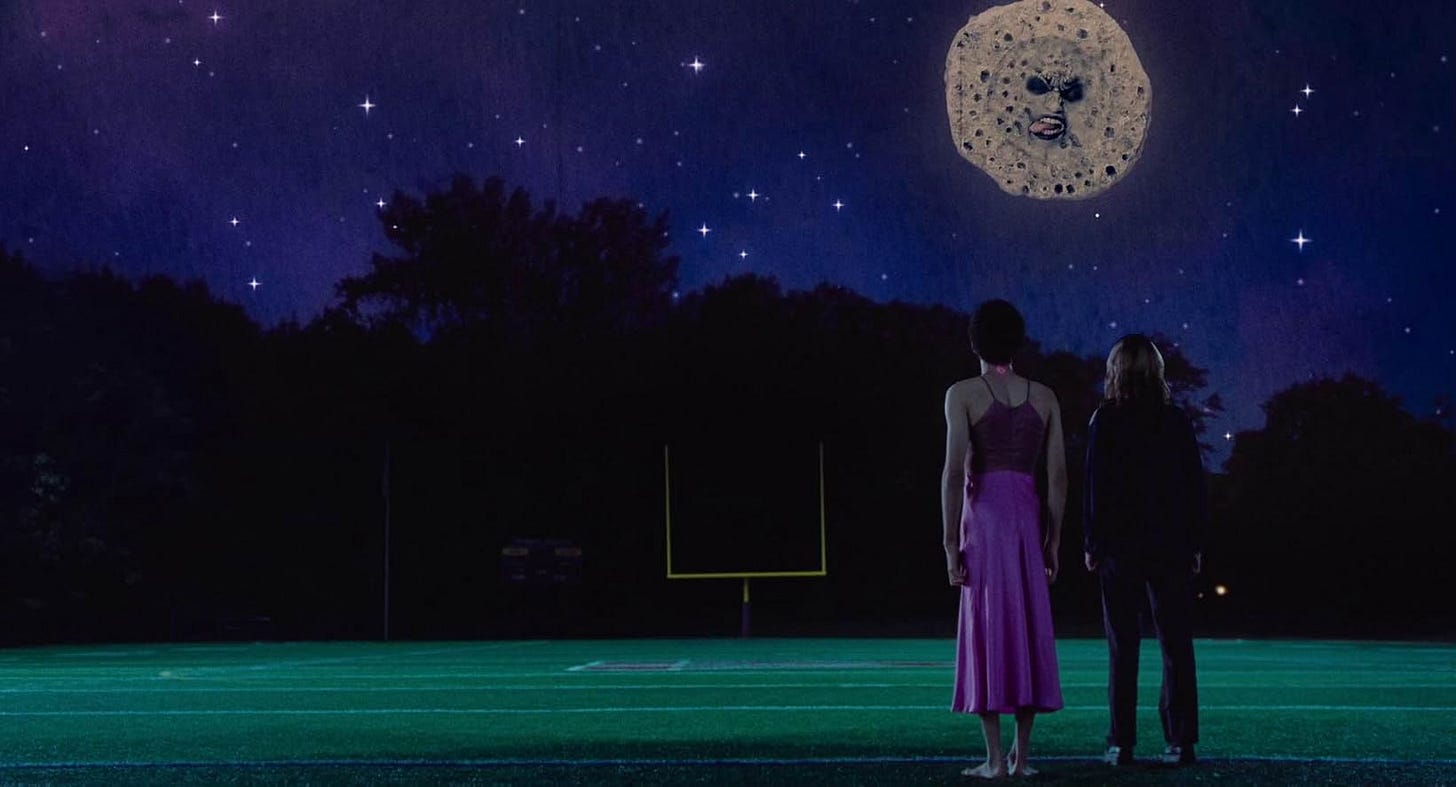

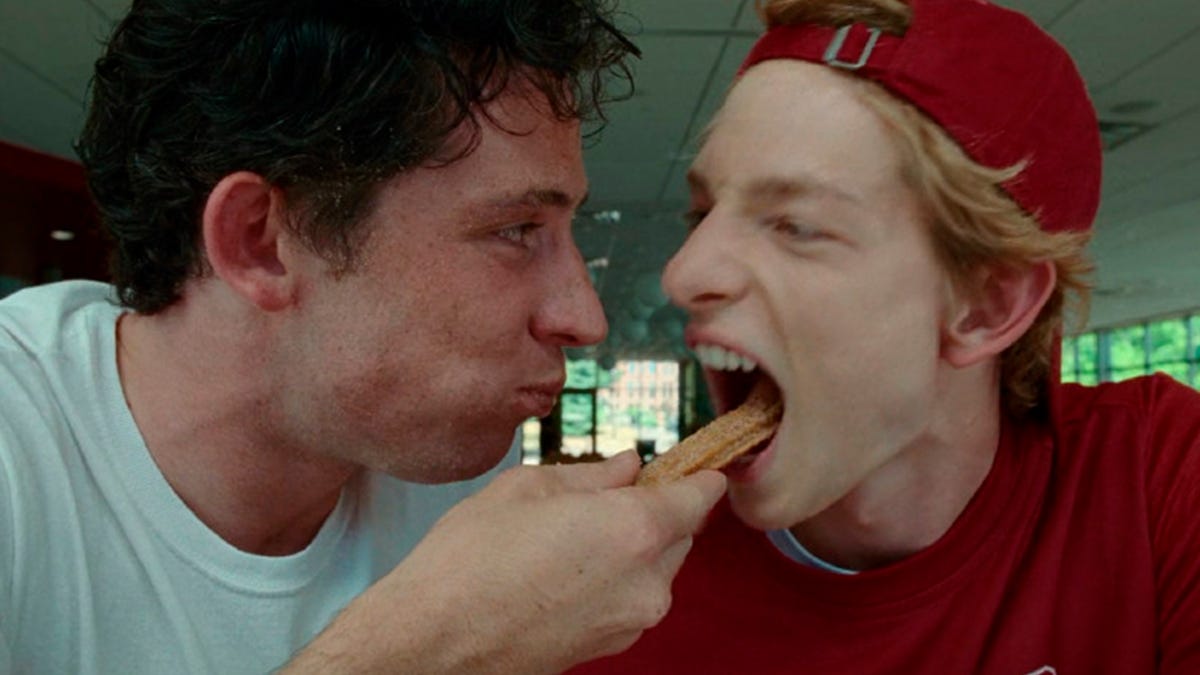


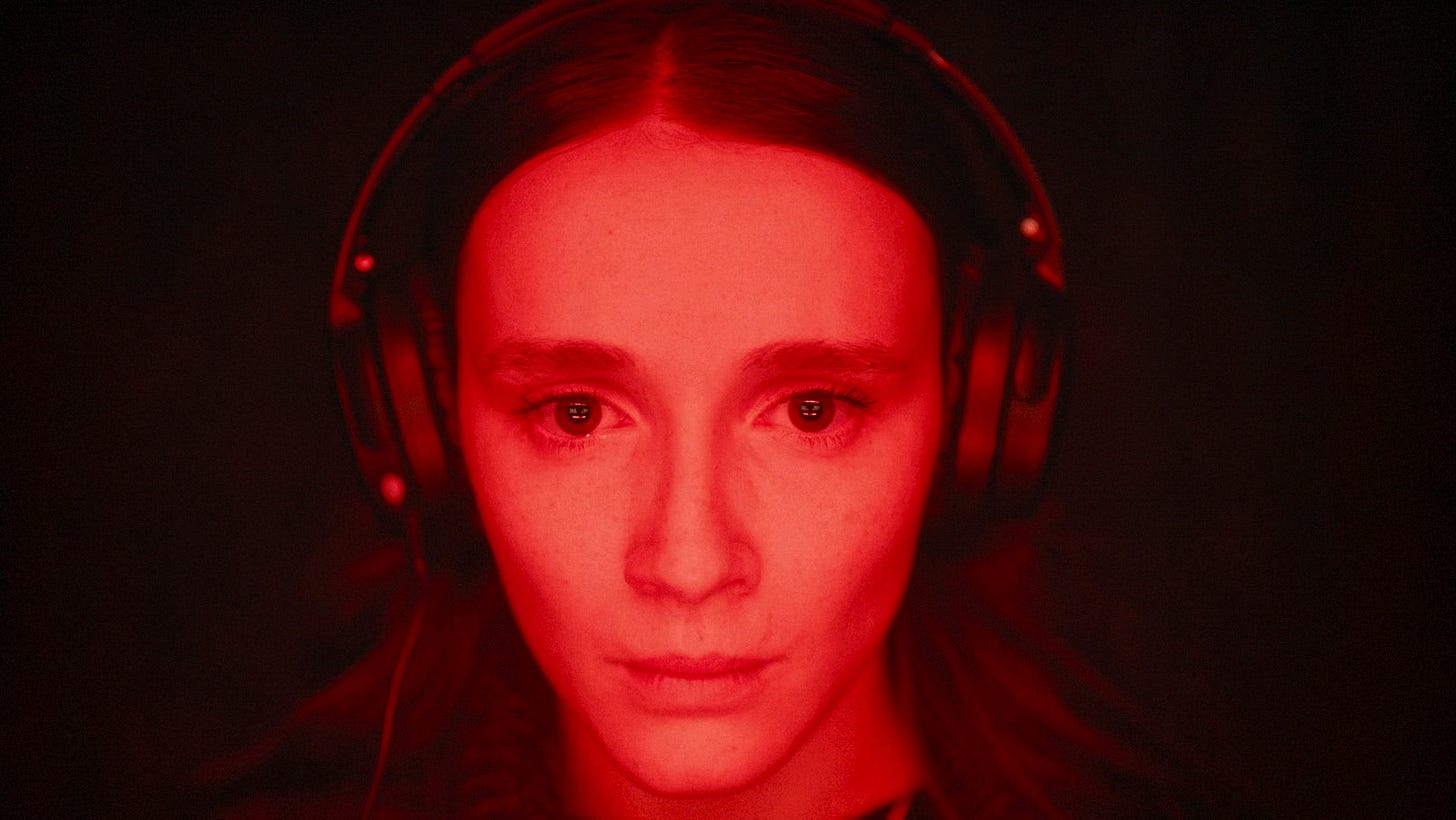
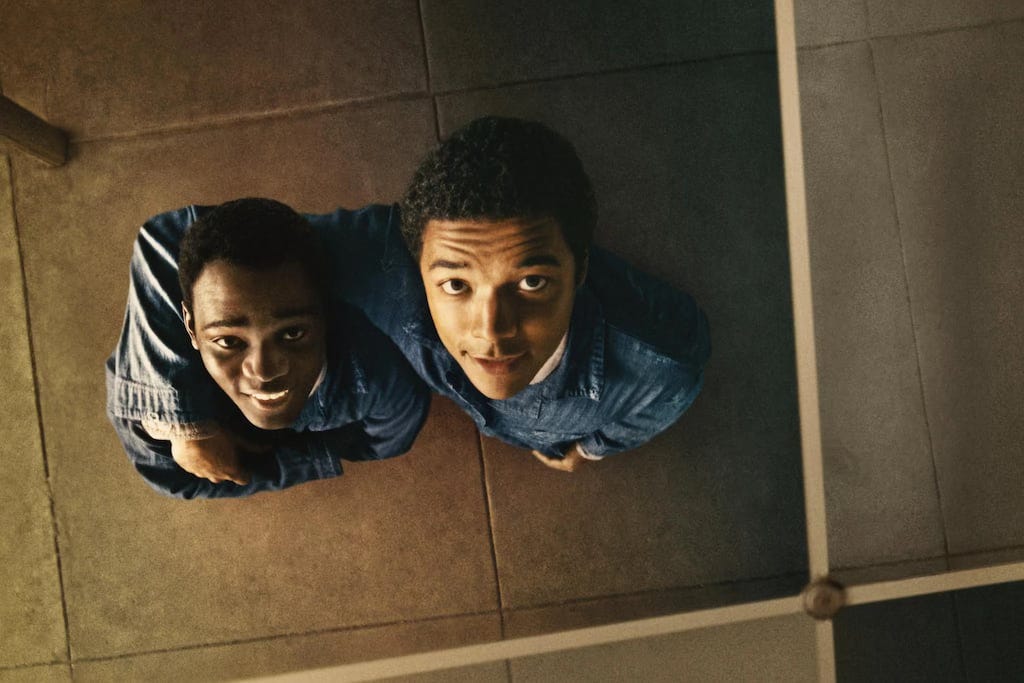
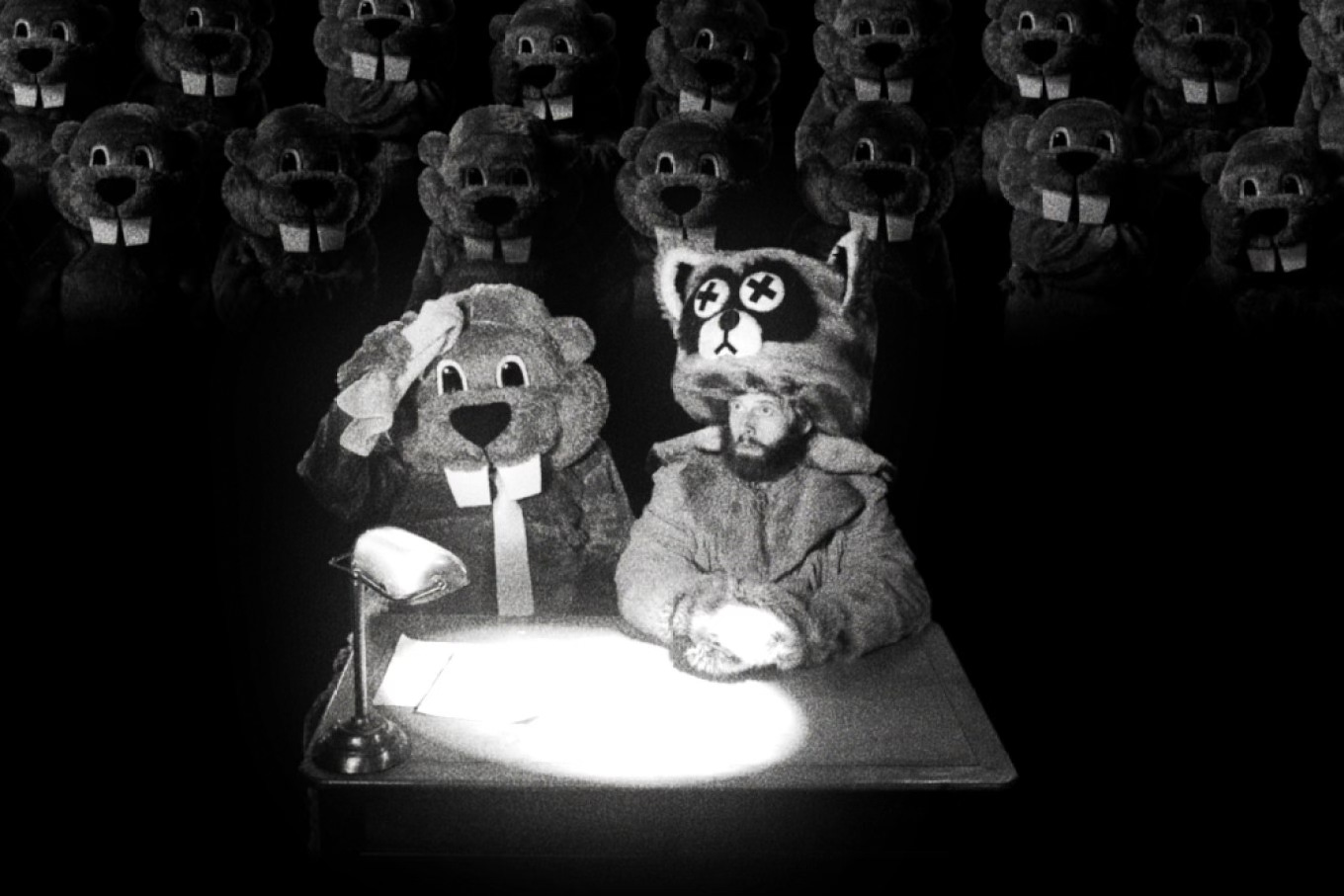





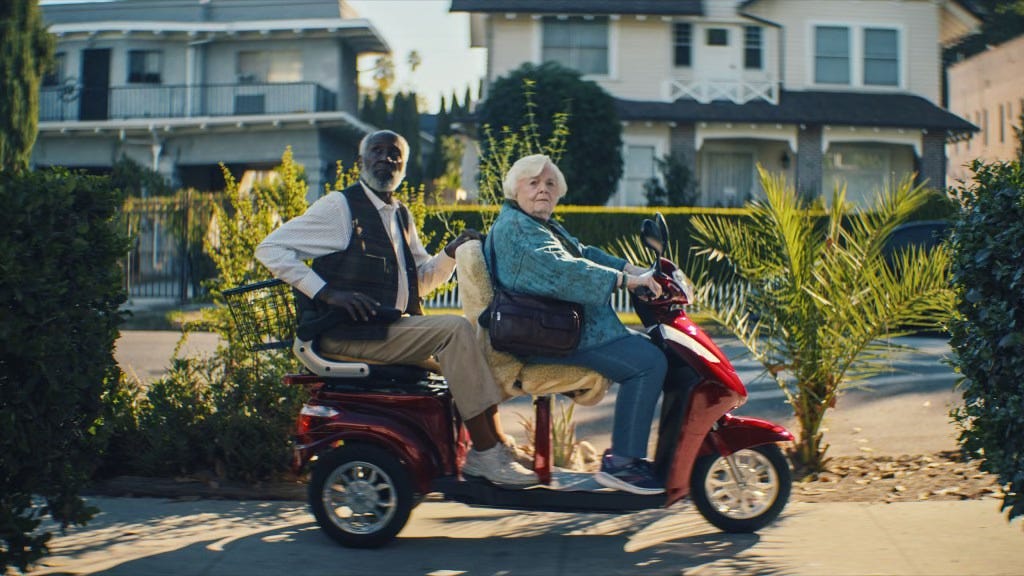


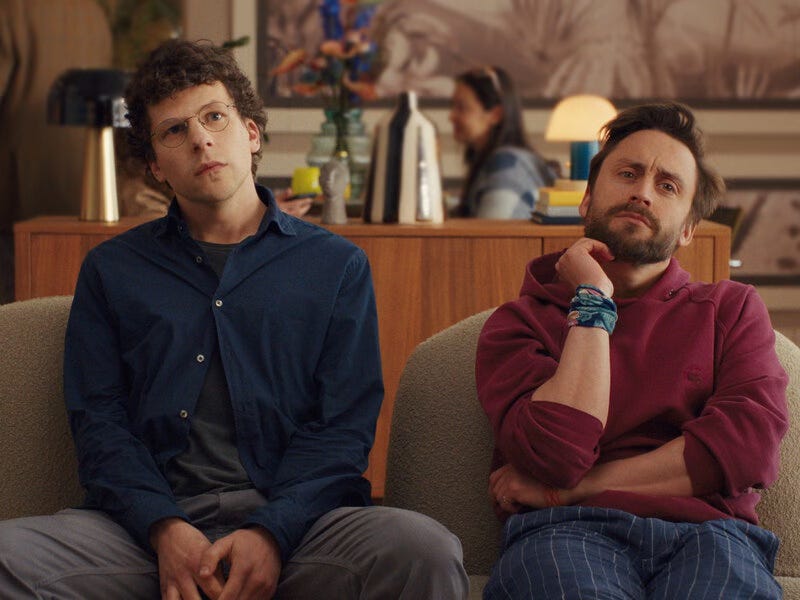
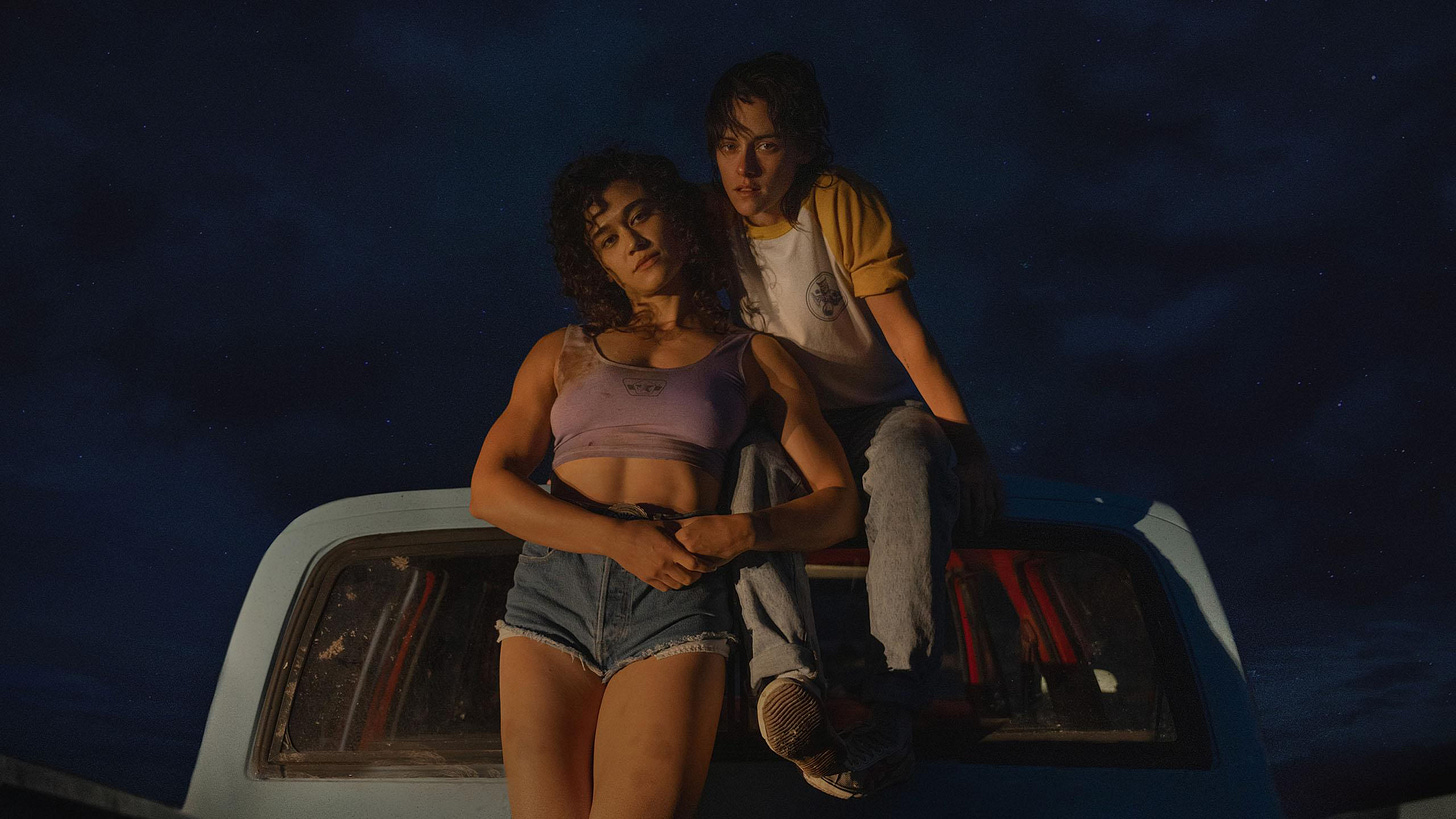

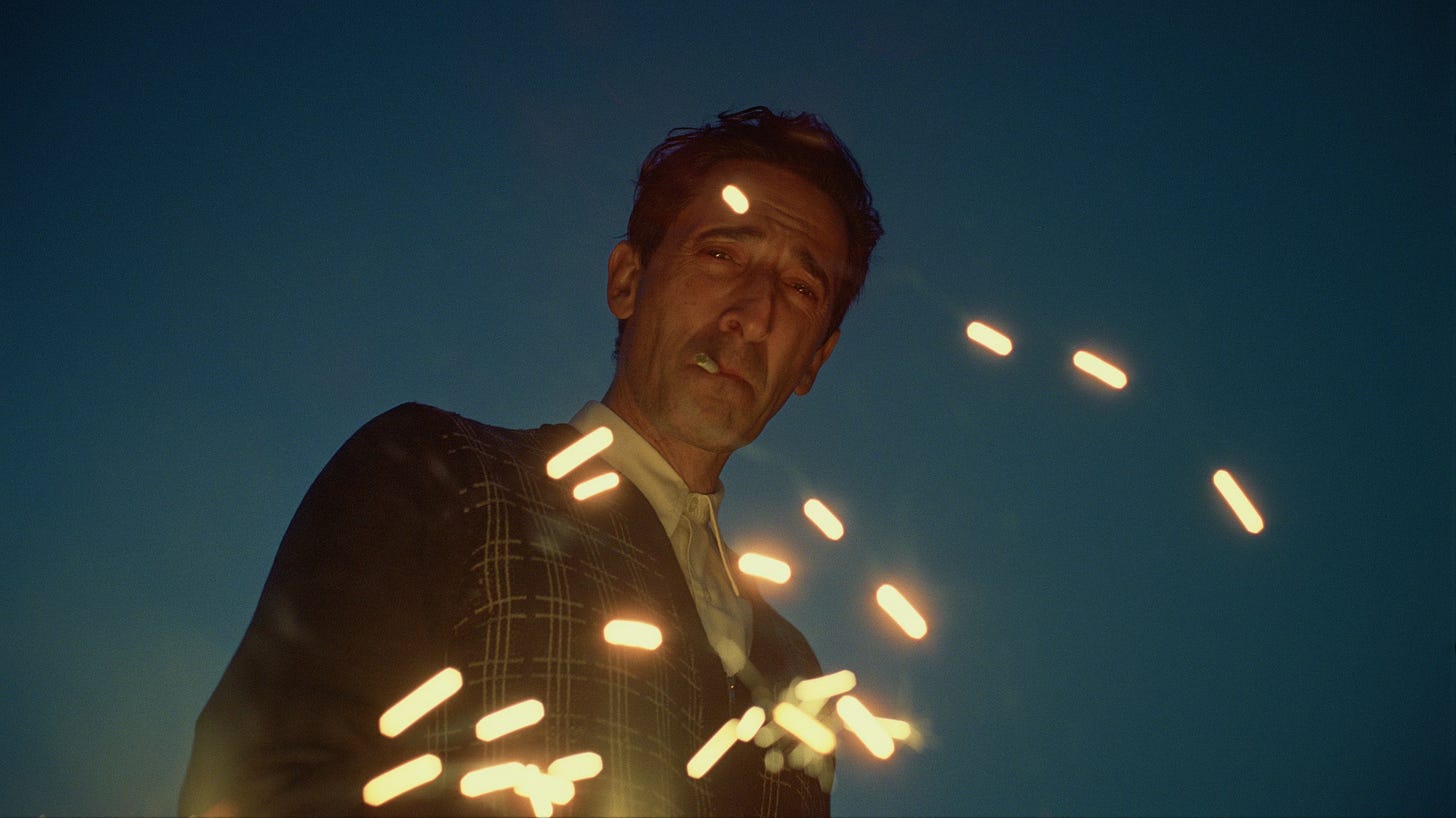
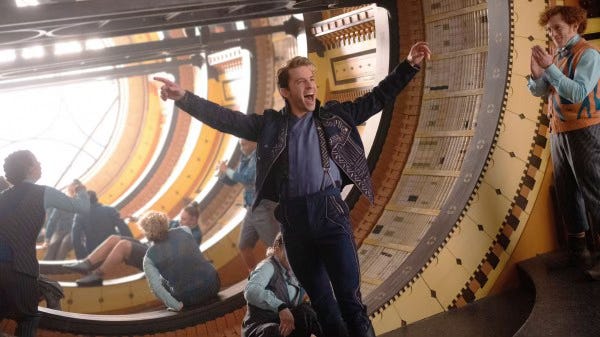
Daisy Edgar Jones's name evokes J. Edgar Hoover for me
(Also, lovely writing as usual. I need to finally get around to some of those movies.)